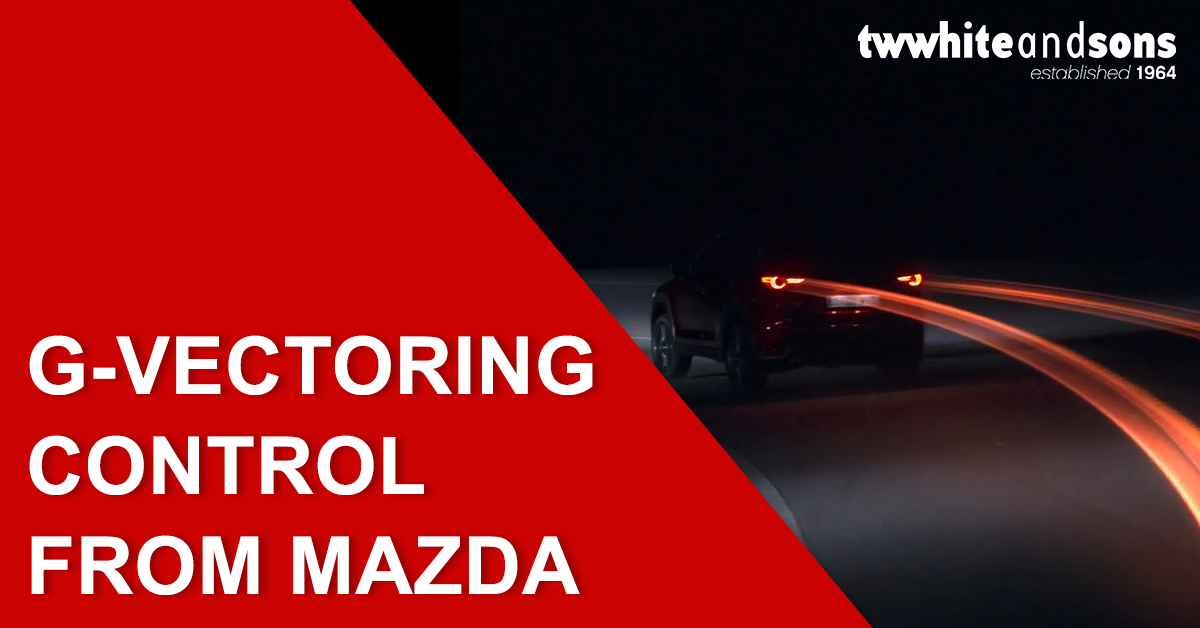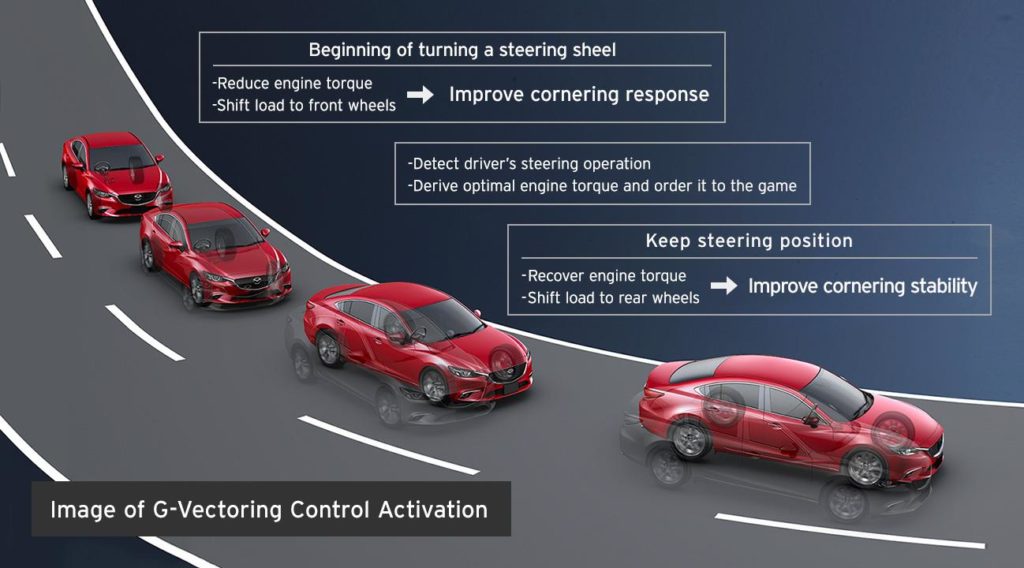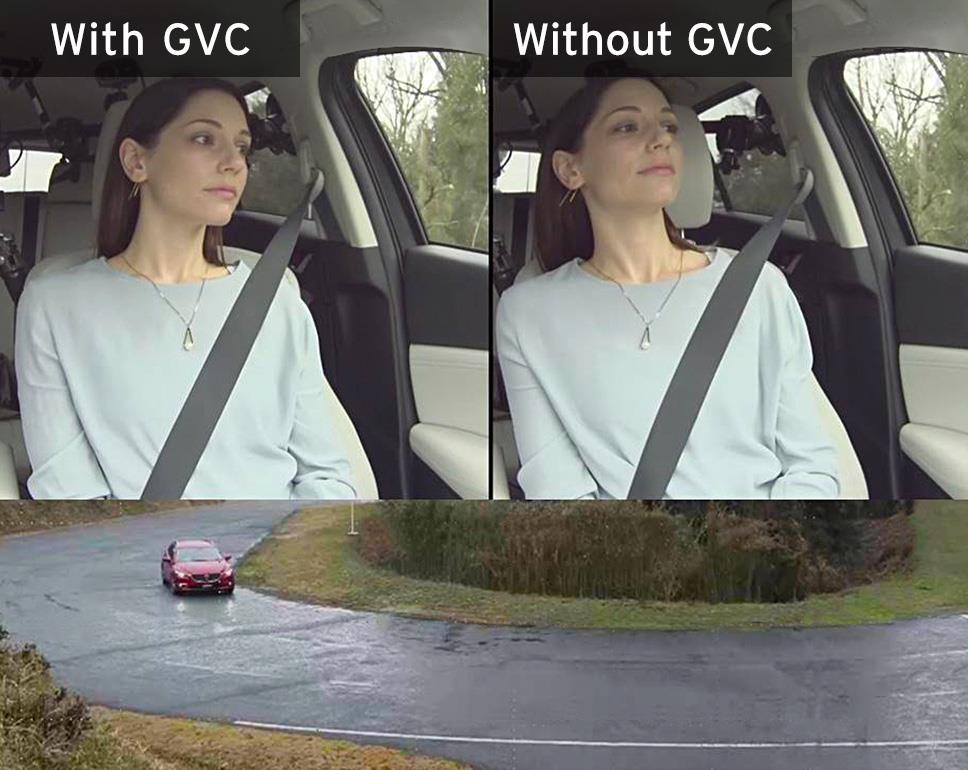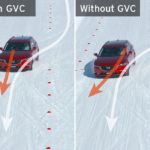
G-Vectoring Control from Mazda
Along with the release of the Mazda3 and Mazda6, Mazda has unveiled their latest advancement in driving technology – G-Vectoring Control. Inspired by the philosophy of Jinb a-Ittai (‘horse and rider as one’), Mazda has endeavoured to give drivers even greater control and feedback when braking, accelerating and turning.
How does G-Vectoring Control Work?

This first addition to the SKYACTIV-VEHICLE DYNAMICS series offers drivers greater control over the car by adjusting the lateral and longitudinal acceleration forces together. In doing so, the engine torque is adjusted in response to steering inputs and controls the vertical loading on each tyre. When the car begins turning, the vertical load is shifted to the front tyres by generating a deceleration G-force. As a result, the front-wheel grip is increased, improving the vehicle’s responsiveness. If a consistent steering angle is maintained, the G-Vectoring Control recovers the engine torque, transferring the load to the rear wheels to enhance stability.

These small adjustments offer the driver greater confidence in the car’s ability to follow their intentions, reducing the need for corrections. However, the subtlety of G-Vectoring Control means there is zero driver or passenger discomfort.
The Benefits
1) Increased Driver Confidence
The innovative G-Vectoring Control Systems allows drivers to feel confident that the car will follow their intended line precisely. This applies not only to turning, but also to the minute changes in direction caused by road surface irregularities. The slight force redistribution made by the G-Vectoring Control greatly reduces the need for driver corrections.
2) Reduced Fatigue
The need to constantly make minor – often unconscious – corrections while driving is one of the key factors that contributes to driver fatigue. On long journeys, the reduced need for corrections created by the G-Vectoring Control means drivers will feel more alert.
3) Increased Comfort

On top of reduced fatigue, the G-Vectoring Control System creates a smoother transition between G-forces. This reduces body and head sway, providing a more comfortable ride.
4) Greater Peace of Mind
The ability of the G-Vectoring Control to enhance both handling and stability simultaneously also provides improved control in adverse conditions. When driving in rain, or on ice, snow or poor road conditions, G-Vectoring Control helps to stabilise the vehicle and improve the tyre grip. This increased stability will give drivers peace of mind in any conditions.
5) No Additional Weight
As G-Vectoring Control is a software-based technology, it requires no additional space or weight. Instead, it utilises Mazda’s SKYACTIV-engines, SKYACTIV-transmissions and SKYACTIV-chassis to create this improved G-force distribution.
G-Vectoring Control is available now in both the Mazda3, Mazda6 and all-new Mazda CX-5. To find out more, get in touch with a member of our sales team today at our Mazda showrooms in Weybridge and Bookham, Surrey and Orpington, Kent.
Similar Articles
Hybrid vs Electric Cars Pros and Cons
Although Hybrid and Electric cars remain a niche market in the UK, their popularity is growing. A brief look at the SMMT registration data for 2022 can give you an idea of where the market currently stands: Battery Electric Vehicles (BEVs): 267,203 cars sold in 2022. A 40.1% increase from 2021. Plug-in Hybrid Electric Vehicles […]
Suzuki announces partnership with Toyota to build Hybrid Cars
Toyota Motor Corporation and Suzuki Motor Corporation today announced their next step in their collaboration. This will focus on Hybrid Car production, including plans to bring production of a new Suzuki hybrid car to Toyota’s UK factories. On Wednesday, Toyota and Suzuki announced an agreement to begin collaboration on electric vehicles and other in-car […]
Goodbye spark plugs, hello SKYACTIV-X!
Mazda announces their long-term “Sustainable Zoom-Zoom 2030” plan, including the introduction of a spark plug free petrol engine in 2019 Back in February we wrote about Mazda’s rumoured research into a compression based petrol engine to replace their current spark ignition technology. At the time, their had been no word from Mazda on the topic. […]
